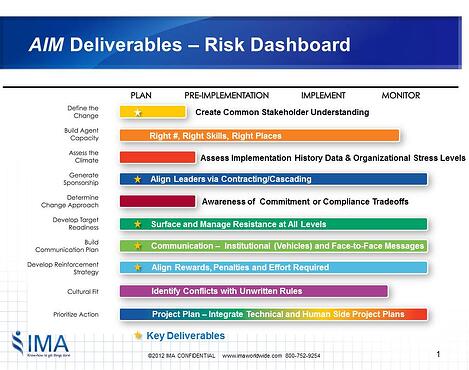As change management consultants, we are attuned to business trends and their implications for implementation. The next wave of change management methodology application may well be in building a "collaborative culture." The advent of social technology has brought with it increased emphasis on increasing communications and collaborations with external customers. But the real value of collaboration is largely untapped. 
In fact, an article in the McKinsey Global Report notes that "while 72 percent of companies use social technologies in some way, very few are anywhere near to achieving the full potential benefit. In fact, the most powerful applications of social technologies in the global economy are largely untapped. Companies will go on developing ways to reach consumers through social technologies and gathering insights for product development, marketing, and customer service. Yet the McKinsey Global Institute (MGI) finds that twice as much potential value lies in using social tools to enhance communications, knowledge sharing, and collaboration within and across enterprises."
Over the past few months, we have heard many organizations talk about the need to build a more "collaborative culture" in IT organizations, in sales, and even generically across the enterprise. Some clients have attempted to use technology solutions to drive the culture change.
But in every case, the logic of collaboration butts up against the reality of what it takes to implement cultural change. As the McKinsey article concludes, "To reap the full benefit of social technologies, organizations must transform their structures, processes, and cultures: they will need to become more open and non-hierarchical and to create a culture of trust. Ultimately, the power of social technologies hinges on the full and enthusiastic participation of employees who are not afraid to share their thoughts and trust that their contributions will be respected. Creating these conditions will be far more challenging than implementing the technologies themselves."
So while the benefits of collaboration are clear and significant, the real work is in implementing the change. And you won't change your culture just by having people attend some training programs on collaboration!
Our change management consulting confronted the issues in creating a collaborative culture with one of our clients.
This client recognized the strategic need to increase collaboration and knowledge-sharing across the enterprise. A large percentage of its workforce was contemplating retirement in the next five years, creating a situation where much of the intellectual capital could soon be walking out the door. At the same time, the competitive landscape required the organization to focus on driving innovation in order to continue to thrive.
For these reasons, the client had invested in a state-of the-art tool designed to capture knowledge across its various business units. While there was much to gain from implementing this tool, the organization quickly found that people were interested in experimenting with the tool, but were not actually using the tool on a daily basis to full functionality. In other words, people were motivated to “touch” the technology, but were not adopting it as the “way work gets done." This posed two risks:
1. That the organization would not achieve the intended benefits of the tool
2. If the implementation stalled, or failed, leaders would lose credibility for future changes
The client called on our change management consulting expertise to put together a risk assessment and a strategy for overcoming identified barriers to change. Using the Accelerating Implementation Methodology (AIM) Implementation Risk Forecast, the IMA change management consultant was able to pinpoint specific gaps on the “people-side,” including:
assessment and a strategy for overcoming identified barriers to change. Using the Accelerating Implementation Methodology (AIM) Implementation Risk Forecast, the IMA change management consultant was able to pinpoint specific gaps on the “people-side,” including:
- There was no common definition of the “end-state” or the desired new behaviors (what people would be observed doing differently if the implementation was successful)
- Sponsorship had not cascaded through the organization
- There was no explicit reinforcement strategy to reward adoption or make it easier to use the tool
- There was no strategy for managing resistance—given that this tool was designed to change how work was accomplished, it was inevitable that there would be resistance
To overcome these barriers, our change management consulting centered around building a strategy for gaining Sponsorship across the enterprise and using reinforcement techniques to reward those individuals who were truly adopting the tool.
From a change management perspective, inculcating collaboration is a complex, enterprise-wide change requiring a structured, repeatable process that is managed with rigor and discipline. All the "repeatable" barriers to enterprise-wide change are in play, so before launching into a strategic initiative around collaboration or implementing an on-line collaboration tool, be aware of the risks.


